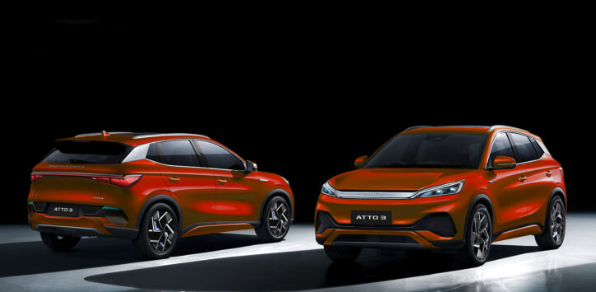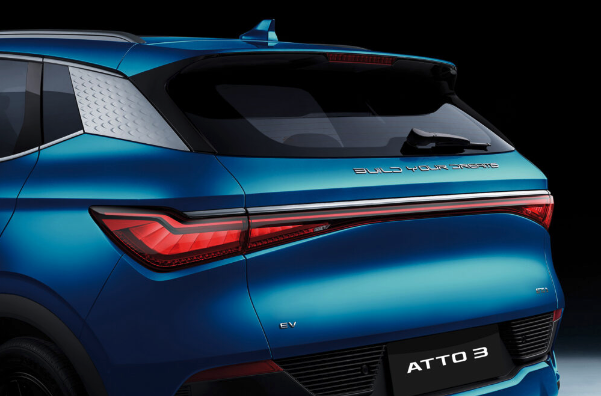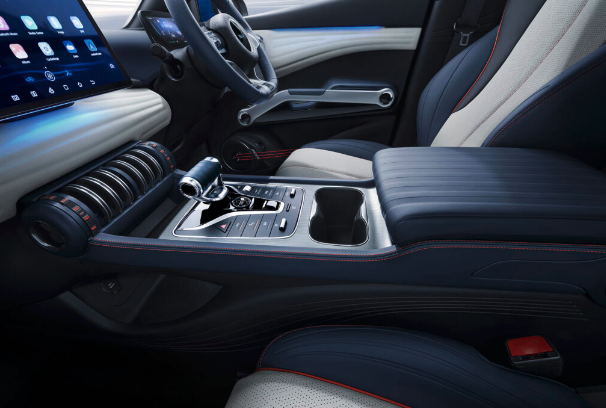Atto 3 prices, arrival, crash test plan shared
/Distributor’s schedule announced as safety auditor also airs intent
THE latest electric entry to the budget end of the market is in line to be crash-tested by the auditor whose findings are prioritised in New Zealand.
Intention by Australasian New Car Assessment Programme (ANCAP), which bases in Melbourne and is part-funded by New Zealand agencies and Government, to assess the BYD Atto 3 has revealed as distributor Ateco Automotive, representing maker, BYD Auto, has announced Atto 3’s pricing and shared detail about specification and availability.
With the Government’s Clean Car discount of $8625 applied, an entry variant of the compact crossover is set to challenge another Chinese product, the MG ZS EV, as a cheap brand-new choice for Kiwis.
ANCAP told MotoringNZ.com yesterday the Atto 3 is on its schedule. A spokesperson was unable to say exactly when the model will be subjected to the bruising regime of tests, save to voice hope it will happen this year. When the scores will become public could not be answered.
“Testing of the BYD Atto 3 has been scheduled and an ANCAP safety rating will be published upon the completion of all testing and technical assessments.
“ANCAP is working closely with BYD (China) and the local Australian distributor, EVDirect, in relation to the test schedule, local vehicle specification and safety performance.
“We understand there is significant interest in this new market entrant, from both fleet buyers and general consumers, and having an independent rating for this vehicle is a priority for ANCAP.
“Depending on the local launch timing as determined by BYD and their distributors, if the Atto 3 is available to consumers prior to ANCAP’s publication of its safety rating, the Atto 3 will be classified as ‘unrated’ until ANCAP is able to publish a rating.”
Pressed to give some idea about when the test might occur, the spokesperson said there was hope testing will be completed during 2022 “however there are many variables that can have an impact on test and publication timing.”
Crash testing is not vital to a new vehicle’s availability in NZ nor is it any more or less requisite for electric cars than other types.
The Telsa Model Y, which has also just come on sale, does not have an ANCAP (or Euro NCAP) rating, though other Teslas have NCAP scores (the Model 3 sedan from which the Y is derived achieved five stars from NCAP in 2019).
The Hyundai Ioniq 5 also arrived before it was assessed by ANCAP’s sister, European NCAP, which subsequently awarded the maximum five stars and noted exceptional performance in some areas.
Strong scores from those agencies are good currency with Waka Kotahi NZ Transport Agency and can be a handy leverage, not least for budget models; reminding that low cost does not mean scrimping where it counts most.
They are doubtless good for product from China, an EV powerhouse whose exports models are of growing importance and purpose-designed to match international qualities. The MG ZS EV achieving the maximum five stars from ANCAP in 2019 was seen as a powerful signal of advancement; the score being higher than that for the petrol car, assessed in 2017, from which it derives.
The Atto 3 version with potential to reset the admission price to driving a new EV is the Standard, which is being released in December.
The product push begins in August with a higher specification car, called the Extended, which at $57,990 is $5000 dearer than the Standard.
With the rebate applied, those models fall to $49,365 and $44,365 respectively.
In its first iteration, the MG ZS EV was cheaper still; it held a sticker of just over $40,000.
But that model has gone from the market, with an updated line selling from next month; as a $52,990 Essence and a new base car, called Excite, for $49,990, both prices excluding the rebate. These respectively costs $4000 and $1000 more than the original car. The MG prices include on-roads. Those are additional to the BYD stickers.
ANCAP’s regime spans seven destructive crash tests. In addition to this, there are eight active safety performance tests, including crash avoidance (of which there are hundreds of scenarios assessed).
To be awarded a five-star safety rating – a result which BYD’s distributor in Australia has already publicly stated as being a certainty - new vehicles must perform to certain standards. A vehicle's overall safety rating is based on the weakest result in any of those assessments.
The ANCAP spokesperson explained acquisition of test vehicles varies.
“… with some manufacturers actively seeking an ANCAP safety rating prior to market launch, and others where ANCAP uses its own funds to acquire vehicles and test (where manufacturers are not actively seeking a rating).
“In the case of the BYD Atto 3, the manufacturer has actively sought an independent safety rating for this model, and has been liaising closely with and supporting ANCAP in preparation for its market local entry.”
The NZ-market variants of Atto 3 will be distinguished by their battery size and vehicle colour options; all other specifications are the same. Standard is white, while blue and grey add $750.
The Extended model has a 60kWh battery pack which is claimed to fully replenish in just a hour when on a DC fast charger within one hour. Household charging requires 11 hours.
The Standard has a 50kWh battery unit. Recharging rates for this have not been shared.
Both models utilise the same 150kW/310Nm motor delivering a 0 to 100kmh time of 7.3 seconds. The Standard has a WLTP-rated range of 320km; the 60kWh model extends that by another 100kms.
Active safety features include seven airbags (one between seats), lane departure warning, lane-keeping, adaptive cruise control, AEB, front and rear collision warning and blind-spot monitoring.
Both models come with a 12.8-inch touchscreen which can rotate by up to 90 degrees, a panoramic sunroof, a one-touch electric tailgate and LED headlights with high beam assist.
There are also electrically adjusted seats, a five-inch digital instrument cluster, synthetic leather trim, a 360-degree surround-view monitor, a smart key, and a wireless phone charger.
The warranty period extends for six years/150,000km while the battery is covered for eight years/160,000kms.
BYD has appointed dealerships in Auckland, Hamilton, Tauranga, Wellington, Christchurch and Dunedin.
BYD Auto only builds electrified cars. It’s reported that two more models will arrive here next year, with another EV and a PHEV in 2024.
MotoringNZ yesterday published a story suggesting eligibility for a Clean Car rebate rested primarily on crash test results. This is incorrect. The error is regretted.



















